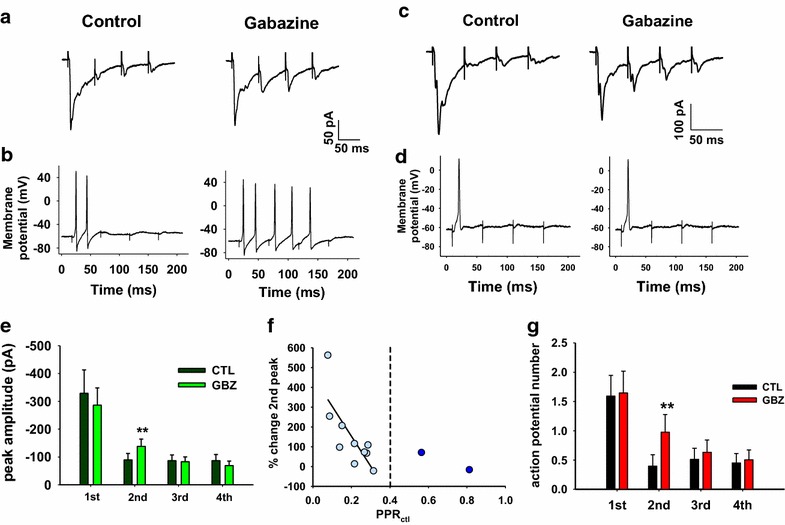Fig. 6.

Gabazine enhances action potential firing to the second stimulus in a four stimulus train in a subpopulation of synapses. a, b Example of eEPSC/P traces recorded from a lamina III/IV neuron in voltage (a average of five consecutive traces) and current clamp (b individual, representative traces), evoked by repetitive stimulation (four pulses, 20 Hz). Gabazine increases both the second eEPSC amplitude and action potential firing. c, d Example of a different neuron where gabazine produces the increase of the second eEPSC peak, without altering action potential firing (c average of five consecutive traces; d individual, representative traces). e Effect of gabazine on mean absolute peak amplitudes from a sample of 12 neurons. Gabazine causes a significant increase of the second peak (paired t test; p = 0.007, n = 12). f Relation between the effect of gabazine on the second peak and PPRctl. As shown in Fig. 3b, there is a strong correlation between the effect of gabazine on the second peak and PPR when it is less than 0.43 (Pearson correlation test, p = 0.008, n = 10). g Mean number of action potentials generated at each stimulus (average of 5–6 consecutive traces, same sample of 12 neurons shown in e, f). Action potential firing is significantly increased only at the second stimulus during gabazine, considering the whole sample of 12 lamina III/IV neurons (paired t test, p = 0.008, n = 12)
